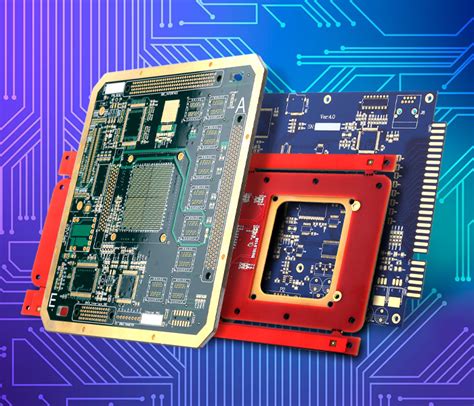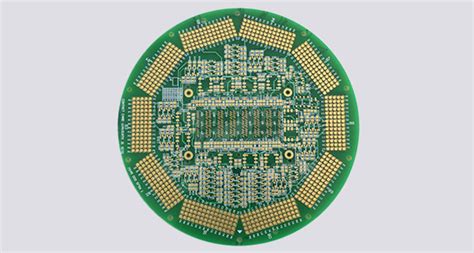1. Optimizing PCB Assembly Services for Better Outcomes
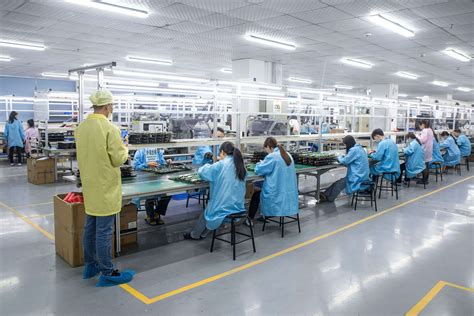
Key Takeaways
Optimizing pcb assembly services is essential to achieve better outcomes in the electronics manufacturing industry. One of the most significant advantages of streamlining PCBA processes is the enhancement of overall product quality. By adopting effective strategies such as implementing advanced technologies and utilizing automation, manufacturers can significantly reduce production times and minimize labor costs.
A well-structured approach to pcba processes encompasses several key areas:
| Aspect | Strategy |
|---|---|
| Efficiency | Adopt automation for repetitive tasks |
| Cost Reduction | Use bulk purchasing for components |
| Quality Control | Implement regular inspections and testing |
Furthermore, manufacturers should not overlook the importance of quality control measures. These practices ensure that defects are caught early in the assembly process, thus reducing waste and rework. As highlighted by industry experts, "A proactive approach to quality not only preserves product integrity but also enhances customer satisfaction."
Moreover, effective supply chain management plays a pivotal role in ensuring that pcb assembly services can rely on timely delivery of components, allowing companies to remain competitive in a fast-paced market. By integrating new technologies, such as data analytics and real-time monitoring systems into the supply chain process, companies can anticipate demands more effectively and react promptly to changes.
In conclusion, leveraging best practices and innovative solutions in the realm of pcba services ultimately leads to better outcomes—encompassing improved efficiency, reduced costs, and superior product quality across the board.
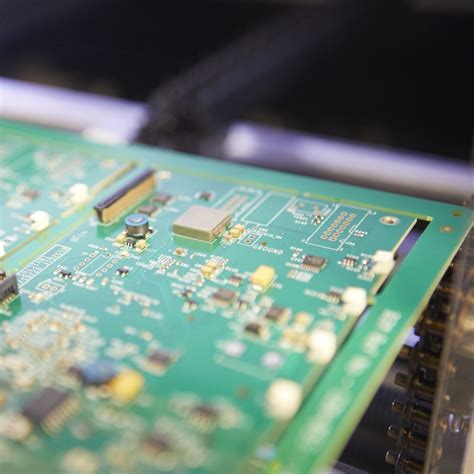
Understanding the Importance of PCB Assembly Services
In the rapidly evolving electronics manufacturing industry, the significance of PCB assembly services cannot be overstated. PCBA, or Printed Circuit Board Assembly, serves as the backbone of electronic devices, facilitating the connection and functionality of various components. This intricate process is essential not only for ensuring that devices operate as intended but also for achieving efficiency and effectiveness in production. High-quality PCB assembly is crucial for maintaining product reliability, which ultimately impacts a company’s reputation and market position.
By prioritizing robust PCB assembly services, manufacturers can streamline their operations, enhance productivity, and reduce lead times. This is especially important in today’s competitive landscape, where time-to-market can significantly influence business success. Additionally, effective PCB assembly services enable companies to optimize their resources and minimize waste, contributing to a more sustainable manufacturing process.
Moreover, as technology continues to advance, the demand for complex electronic products increases. This directs attention toward innovative approaches in PCBA, ensuring that the assembly processes are equipped to manage both current and future requirements. By integrating best practices into their PCB assembly strategies, companies can not only improve their product quality but also achieve significant cost savings and operational efficiencies.
Ultimately, recognizing the importance of proficient PCB assembly services is vital for any organization aiming to thrive in today’s high-speed technology environment. By focusing on enhancing these services, businesses are better positioned to innovate and meet changing customer demands while maintaining operational excellence.
Key Challenges in PCB Assembly and How to Overcome Them
In the realm of PCB assembly, several challenges frequently arise, impacting the efficiency and quality of the PCBA process. One significant issue is the management of component placement accuracy. Inaccurate placements can lead to functional failures, which not only disrupt production timelines but also inflate costs due to rework or scrap. To mitigate this challenge, utilizing advanced automation technologies such as pick-and-place machines equipped with vision systems can dramatically enhance placement precision.
Another challenge is maintaining supply chain integrity. Delays in component delivery can stall assembly lines and lead to missed deadlines. To address this, manufacturers should cultivate strong relationships with multiple suppliers, creating a diverse sourcing strategy that ensures material availability even when faced with unforeseen disruptions.
Moreover, ensuring quality control throughout the assembly process is critical. Implementing real-time inspection methods and employing automated test equipment can help detect issues early in the production cycle, minimizing defects in final products. By adopting proactive measures such as these, companies in the electronics manufacturing industry can effectively address key challenges associated with PCB assembly, maintaining high standards of efficiency and product quality.
Best Practices for Streamlining PCB Assembly Processes
To enhance the efficiency of PCB assembly services, it is essential to implement several best practices that cater to both the technical and logistical aspects of production. First and foremost, proper design for manufacturability (DFM) is critical. This approach involves ensuring that the PCB layout is optimized for assembly, which minimizes complexities during the PCBA process. Engaging in early collaboration between design engineers and assembly specialists can lead to significant reductions in time and costs.
Furthermore, adopting standardization can greatly improve operational flows. Utilizing common components across multiple products not only simplifies inventory management but also helps in reducing lead times substantially. Incorporating automated solutions into the PCB assembly line, such as robotic pick-and-place machines, can enhance precision and speed while decreasing human error.
Another significant factor is continuous monitoring of production efficiency through key performance indicators (KPIs). By analyzing metrics such as cycle time, yield rates, and defect rates, companies can identify bottlenecks and areas needing improvement. This proactive approach aids in not only maintaining quality but also enhancing productivity over time.
Training employees on the latest technologies and methodologies is equally important for achieving optimal results. Keeping personnel well-informed about industry advancements ensures they can effectively tackle challenges that arise during the PCBA process.
Lastly, fostering open communication with suppliers contributes greatly to streamlining processes. Timely updates regarding materials availability and supply chain dynamics can significantly alleviate delays in production schedules, further optimizing overall performance.
By following these best practices diligently, organizations involved in PCB assembly can achieve improved efficiency while ensuring high-quality outcomes in their operations.

Innovative Technologies Enhancing PCB Assembly Efficiency
In the ever-evolving landscape of electronics manufacturing, innovative technologies play a crucial role in enhancing the efficiency of PCB assembly processes. The integration of automation and robotics in PCBA has revolutionized traditional assembly lines, allowing for rapid and precise component placement. This shift not only minimizes human error but also accelerates production speed, leading to shorter lead times for manufacturers. Moreover, advanced software solutions that focus on design for manufacturability ensure that products are optimized at the design stage, further streamlining PCB assembly tasks.
Another significant technological advancement is the use of real-time data analytics. By leveraging data analytics tools, manufacturers can monitor assembly operations and instantly identify bottlenecks or inefficiencies in their PCBA processes. This proactive approach enables teams to make informed decisions that enhance workflow and productivity. Additionally, employing machine learning algorithms to predict maintenance needs can prevent unexpected failures, ensuring continuous operation on the assembly line.
Furthermore, adopting flexible manufacturing systems allows manufacturers to easily adjust production lines for varying batch sizes without extensive downtime. This adaptability is essential in today’s market where demand can fluctuate significantly. By utilizing these state-of-the-art technologies, companies not only improve their operational efficiency but also enhance overall product quality while effectively reducing costs associated with PCB assembly.
The combination of automation, real-time analytics, and flexible systems marks a significant leap forward in achieving optimal outcomes in PCBA, thereby setting new standards within the industry.

Cost-Reduction Strategies in PCB Assembly Services
In the competitive landscape of electronics manufacturing, cost-reduction is a crucial consideration for firms offering PCB assembly services. Implementing effective strategies to minimize expenses can lead to enhanced profitability while maintaining high-quality standards. One pivotal approach is conducting a thorough analysis of the PCBA process to identify areas where waste occurs. For instance, optimizing material usage not only conserves resources but also cuts down on costs associated with excess inventory.
Moreover, investing in automated systems can greatly improve efficiency in assembly lines. Automation minimizes labor costs and reduces the likelihood of human error, which often leads to costly rework. Companies can also explore sourcing components from reliable suppliers who offer competitive pricing without compromising quality, thus enhancing the overall value of the PCB assembly process.
Another strategy involves fostering a culture of continuous improvement among employees, encouraging them to present ideas for process enhancements that could lead to cost savings. Training workers on best practices and new technologies can maximize productivity and minimize downtime. Additionally, embracing just-in-time manufacturing techniques helps reduce carrying costs and eliminates excess stock, aligning production closely with customer demand.
By implementing these cost-reduction strategies, organizations can not only streamline their PCB assembly services but also create sustainable practices that contribute to long-term success in a fast-evolving industry.
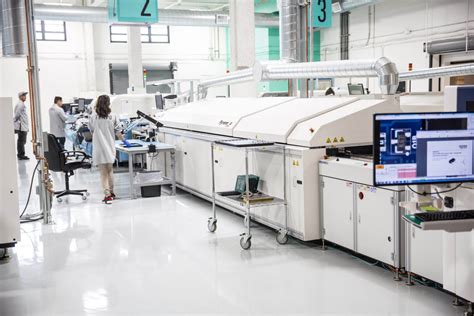
Quality Control Measures for Superior PCB Production
Implementing quality control measures is critical in achieving superior PCB production outcomes. A well-defined quality assurance process ensures that every stage of the pcb assembly is meticulously monitored, minimizing defects and enhancing overall product integrity. Utilization of automated testing equipment plays a significant role; employing technologies such as Automated Optical Inspection (AOI) and X-ray inspections can quickly identify flaws that may go unnoticed by the naked eye. Additionally, adhering to industry standards and certifications, such as IPC-A-610, guarantees consistent quality in pcba processes.
Furthermore, fostering a culture of continuous improvement encourages teams to identify bottlenecks and inefficiencies, promoting innovative problem-solving strategies. This can involve regular training sessions where employees stay informed about the latest methodologies in quality control and best practices. By integrating feedback loops where defects are assessed systematically, manufacturers can implement corrective actions immediately, preventing recurring issues in future production runs.
Lastly, engaging in collaboration with suppliers is paramount to ensure that all components meet the required specifications before they enter the pcb assembly line. This proactive approach not only streamlines the assembly process but also significantly boosts the reliability of final products. By prioritizing these quality control measures, companies can achieve outstanding results in their PCB assembly services, thus gaining a competitive edge in the ever-evolving electronics manufacturing landscape.
The Impact of Supply Chain Management on PCB Assembly
Effective supply chain management is crucial for optimizing pcb assembly services, as it ensures a seamless flow of materials and information throughout the production process. A well-organized supply chain can significantly enhance efficiency by reducing lead times and minimizing stock shortages, which is essential in the fast-paced electronics manufacturing industry. For pcba manufacturers, integrating advanced forecasting techniques and inventory management systems can yield substantial benefits. By leveraging real-time data analytics, businesses can anticipate demand fluctuations and adjust their procurement strategies accordingly. Furthermore, fostering strong relationships with suppliers can lead to improved communication and negotiation outcomes, ultimately resulting in cost savings. It is also vital to implement risk management strategies to address potential disruptions within the supply chain, whether due to unforeseen circumstances or market volatility. In this context, investing in technology that facilitates greater transparency within the supply chain can provide valuable insights and enable proactive decision-making. By prioritizing these aspects of supply chain management, companies involved in pcb assembly can ensure that their operations are not only efficient but also resilient against challenges that may arise.
Future Trends in PCB Assembly Services
As the electronics industry continues to evolve, pcb assembly services are adapting to meet new demands and challenges. Advances in technology play a pivotal role in shaping the future landscape of pcba. Automation, for instance, is becoming increasingly prevalent, with robotics and AI-driven solutions enhancing efficiency and precision in the assembly process. This shift not only streamlines production timelines but also reduces human error, thereby elevating the quality of pcb assembly output.
Furthermore, with a growing emphasis on sustainability, manufacturers are exploring eco-friendly materials and processes in pcb assembly. This trend is not only about compliance with environmental regulations but also about responding to consumer demand for green products. Additionally, innovations such as flexible printed circuit boards (FPCBs) allow for more versatile applications and design possibilities, catering to increasingly complex electronic devices.
Emerging trends also highlight the importance of integrating supply chain management with pcba services. Real-time data sharing and collaboration among suppliers can significantly enhance responsiveness and reduce lead times. Finally, the pursuit of smart factories, enabled by the Internet of Things (IoT), is paving the way for more interconnected systems within pcb assembly, allowing manufacturers to monitor performance metrics closely and adjust processes dynamically.
Embracing these future trends will be essential for companies seeking to enhance their pcb assembly services, ultimately leading to improved products that meet the modern consumer’s expectations.
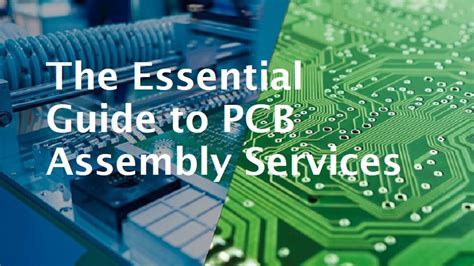
Conclusion
In the rapidly evolving world of electronics manufacturing, pcb assembly services play a crucial role in determining the success and efficiency of production. By focusing on best practices and innovative strategies, companies can significantly enhance their pcba processes, leading to improved product quality and reduced time-to-market. Emphasizing the importance of streamlined workflows and the integration of advanced technologies can help mitigate common challenges faced in pcb assembly, such as production delays and quality inconsistencies. Moreover, adopting cost-reduction strategies not only improves the bottom line but also allows manufacturers to remain competitive in a crowded market. Ultimately, investing in rigorous quality control measures ensures that every stage of the pcb assembly process meets industry standards, thereby fostering greater customer satisfaction and loyalty. As manufacturers continue to explore future trends in pcba, such as automation and smart manufacturing techniques, they position themselves for greater success and resilience in an increasingly complex supply chain landscape.
FAQs
What is PCB assembly?
PCB assembly, often referred to as PCBA, is the process of connecting electronic components to a printed circuit board (PCB) to create a functional electronic device. This involves placing components onto the board and soldering them in place.
Why is optimizing PCB assembly services important?
Optimizing PCB assembly services is crucial for improving manufacturing efficiency, reducing production costs, and enhancing product quality. By streamlining processes and implementing best practices, manufacturers can ensure timely delivery and maintain a competitive edge in the electronics market.
What are common challenges faced in PCB assembly?
Some common challenges include managing component quality, ensuring proper soldering techniques, and coordinating with suppliers. Addressing these issues through careful planning and innovative technologies can significantly enhance the assembly process.
How can innovative technologies enhance PCB assembly efficiency?
Incorporating advanced technologies such as automation robotics, AI-driven quality control systems, and real-time data analytics can lead to greater efficiency in PCB assembly. These innovations help minimize human error, speed up processes, and maintain consistent quality throughout production.
What cost-reduction strategies can be applied in PCB assembly services?
Cost-reduction strategies may include bulk purchasing of components, optimizing production layouts to reduce waste, and utilizing design for manufacturability (DFM) principles. Implementing these strategies helps lower overall costs while maintaining high production standards.
How are quality control measures implemented in PCB production?
Quality control measures include rigorous testing at various stages of the PCBA process—such as visual inspections, automated optical inspections (AOI), and functional testing—to ensure that all components are correctly placed and soldered. This guarantees reliability in the final product.
What role does supply chain management play in PCB assembly?
Effective supply chain management is vital for ensuring that all necessary components are available when needed. Managing suppliers’ performance and maintaining strong communication with all stakeholders help mitigate delays that can disrupt PCB assembly timelines.
What future trends should we expect in PCB assembly services?
Future trends may involve further integration of smart manufacturing practices through IoT devices, increased emphasis on sustainability through eco-friendly materials, and more customizable solutions for client specifications. Staying updated with these trends will be essential for companies striving for success in PCBA.




